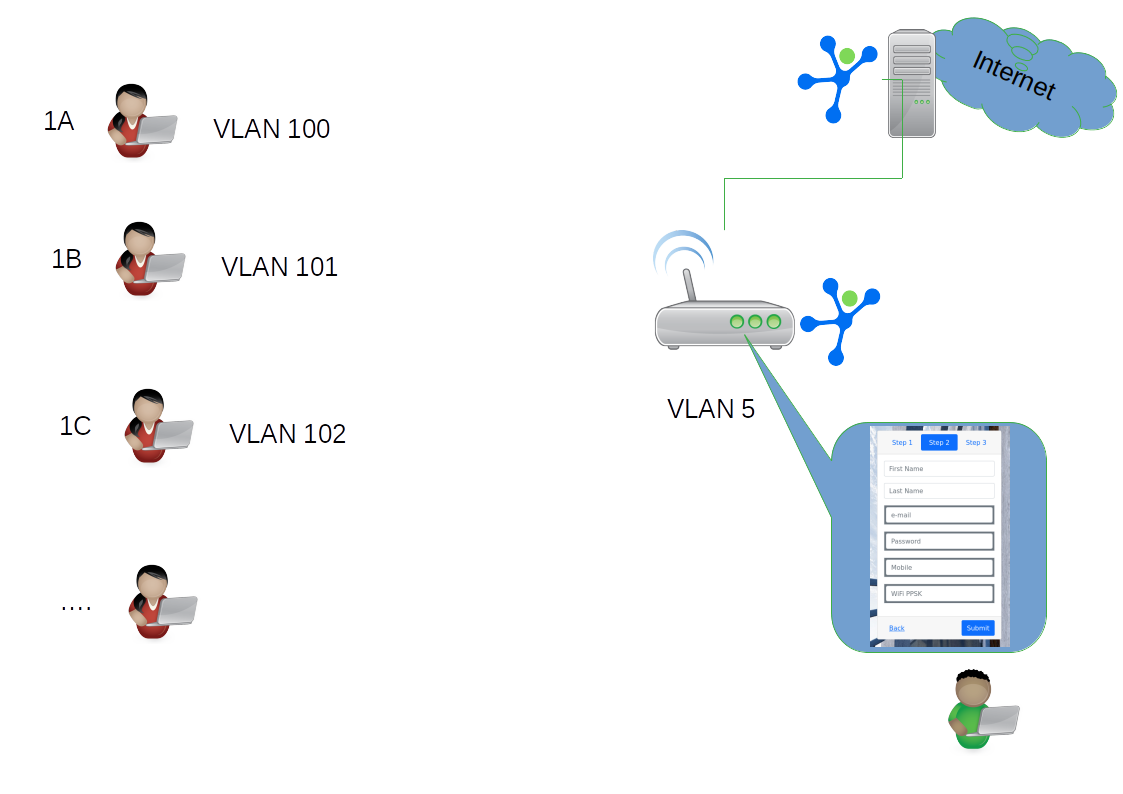This is an old revision of the document!
User registration in a PPSK environment
- RADIUSdesk enables the fast onboarding of new users in a PPSK enabled network.
- The onboarding process consists of the following steps
- The user connects to an SSID that has PPSK enabled, using the shared key used for onboarding.
- The user is shown a landing page on the captive portal where they can register and select their PPSK.
- The user disconnects and reconnects with their own PPSK to gain full internet access.
- This page describes some of the options available to configure the network for onboarding functionality.
Network setup
- For user registration, we use a captive portal with a landing page that enables user registration.
- The captive portal setup requires a few key items to be in place to serve as a user on-boarding setup.
- This includes the following:
- A predetermined pre-shared key to connect with that will put the user in the network with the captive portal.
- A captive portal that will serve a landing page to the user who wants to register.
- A landing page that will allow the user to register.
- We use a pre-defined pre-shared key (PSK) that dynamically moves the user into the network with the captive portal.
- You can decide what role this captive portal should fulfil.
- You can use the captive portal in the traditional way, i.e. users can connect via the portal to gain internet access and have the option to register. The register dialog can include an option for the user to specify their own Private Preshared Key (PPSK).
- Alternatively, you can simply use the Captive Portal as a place where the user can register. During this registration process they can then specify their Private Pre-shared Key (PPSK) which they will give them full Internet access when they use their own preshared key.
- In both cases, we must first activate user registration in the RADIUSdesk login page applet.
Highlights
Highlight video of on-boarding process
